Top providers of Content Delivery Networks in 2023
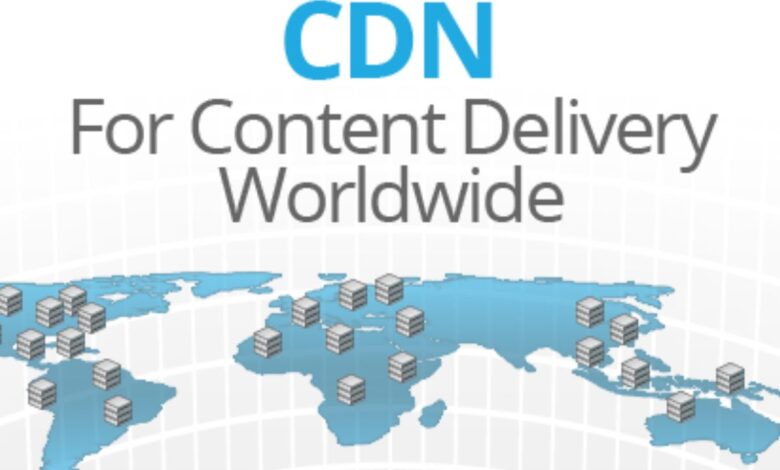
Top providers of Content Delivery Networks in 2023
Do you have enough of the slow loading times and angry customers? The answer you’re looking for might be a content delivery network (CDN)! Research has shown that a 1-second delay in page load time can lead to a 7% decrease in conversions.
By caching and distributing material from servers closer to the user’s location, a CDN can make your website load more quickly. In reality, according to research by Akamai Technologies, employing a CDN can help website performance by as much as 40%.
No one wants to wait any longer in the fast-paced world of today. Because customers may leave your site and possibly visit a competitor’s, slow-loading websites will dramatically reduce your reach. Therefore, content delivery networks will assist you in attracting customers and delivering a fantastic surfing experience.
An explanation of Content Delivery Networks
A Material Delivery Network (CDN) is a globally disseminated network of computers that is intended to provide users with high availability and performance when delivering content. A CDN’s main duty is to distribute and cache material from the origin server to a network of border servers, including pictures, videos, and other multimedia assets.
This web of servers is placed in data centres all around the world to deliver material to users from the server that is nearest to them. By minimising the physical distance that data must travel, the deployment of a CDN enhances the speed and performance of websites and web-based services.
Especially for users who are based far from the origin server, this leads to quicker load times and an improved user experience. Additionally, CDNs increase content accessibility by distributing it across several servers, lowering the possibility of downtime in the possibility of a server failure.
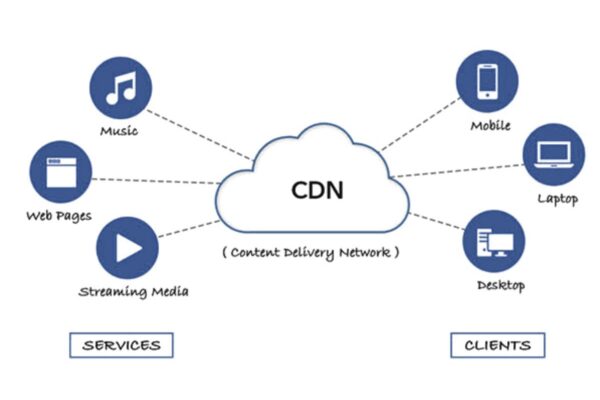
By caching the most often visited files on the edge servers, CDN helps to lessen the burden on the main servers and also enhances security by screening out malicious traffic. CDN helps to reduce traffic on the origin server.
The advantages of a Content Delivery Network
The four important benefits that CDNs provide—better performance, enhanced reliability, cost savings, and resilience against cyberattacks—are the main reasons why web applications utilise them.
Performance
Most people think CDNs for the advantage of faster performance and good reason. Websites that begin employing a CDN have shown load time savings of 50% or even more in some circumstances. Reducing the distance between the location where content is stored and the destination; reducing file sizes to speed up loading, Accelerating server infrastructure optimization to respond to user demands
Reliability
On occasion, things on the Internet go wrong. Network congestion, connection interruption, and server outages all occur. Even in the face of these issues, a CDN allows web applications to continue serving consumers without interruption.
By distributing the network traffic burden, CDNs contain any one server from becoming overloaded. A CDN can start a “failover” process to allow a backup server to take over if a single server has a problem. Some CDNs, such as the Cloudflare CDN, can avoid network congestion much like GPS navigation software may avoid heavy traffic on a motorway.
Saving money
Reducing travels to and from the origin server is the direct method CDNs save costs for website operators. The origin server is spared from delivering the same content repeatedly since CDNs store a large part of a website’s content and provide it from the cache. Rather, the CDN carries out this action on the origin server’s behalf.
resilience in the face of harm.
Protection
Websites can be protected by CDNs from DoS and DDoS attacks, which are both types of denial-of-service attacks. These attacks attempt to overwhelm and crash a website by sending massive amounts of undesirable network traffic there. Compared to a single origin server, CDNs are better able to handle heavy traffic loads and even abnormal traffic surges from DDoS attacks thanks to their numerous servers. By doing this, they maintain websites online despite attacks.
Top providers of Content Delivery Networks in 2023
Through a distributed network of proxy servers set up in data centres, providers deliver content to end users with high availability and high performance. The list of the top CDNs, many of which are used by businesses, is presented below.
Cloudflare

Popular Content Delivery Network (CDN) Cloudflare helps to increase the speed and security of websites. With data centres spread across more than 275 cities worldwide, it runs one of the biggest networks of its kind. This allows it to offer quick, reliable access to webpages and other web-based material regardless of the user’s location.
In IDC MarketScape for Commercial Content Delivery Network Services in 2022, Cloudflare was named a leader globally. Every second, Cloudflare serves an average of 39 million HTTP requests. It is a content delivery network to think about because it is reputable, safe, and reliable.
The business presents a variety of security measures aimed at protecting websites from different forms of attacks, such as DDoS (Distributed Denial of Service) attacks, which can render a website unusable by flooding it with traffic. In addition, Cloudflare provides several performance improvements like caching, bundling, and compression to speed up websites.
It supports newer protocol versions like HTTP/3 and QUIC, which allow quicker and more effective communication between browsers and servers.
• Cloudflare offers precise analytics and logging, giving website owners insights into how their site is performing and assisting them in identifying and resolving issues;
• CNAME Flattening feature that allows Cloudflare to be used as an origin server, allowing users to use their field name while still utilising Cloudflare’s features.
• Cloudflare’s WAF (web application firewall) is made to protect websites from common web-based attacks like SQL injection, cross-site scripting (XSS), and other types of injection attacks.
• Advanced DDoS protection includes traffic filtering, rate limiting, and automatic IP blocking.
Google Cloud CDN

Low latency and high availability content delivery are made possible by Google Cloud CDN, a service provided by Google Cloud Platform. It shows a high level of performance and dependability because it is built on the same worldwide network that underpins Google’s services like Search and YouTube.
With other Google Cloud services like Google Cloud Storage and Google Cloud Load Balancing, it integrates without any problems. Users can easily configure and manage their content distribution infrastructure on the same platform they already use to host their content thanks to this.
The service accepts a variety of content forms, including HTML, JavaScript, pictures, and videos, and automatically speeds up the delivery of material.
The following are some of the benefits of using Google Cloud CDN:
• It delivers security features like an IP-based firewall, Security policy, and DDoS protection to ensure your content and protect it from DDoS attacks.
• It gives you control over how content is cached and gives you the option to invalidate cached content as necessary to maintain freshness.
• Provides options like SSL offloading, which lets users deliver information securely over HTTPS without having to deal with SSL certificates themselves.
- It automatically compresses text and images, can resize images to minimise file size, and can cache your material across all of its edge locations to improve load times and lessen the burden on your server. It also offers Cloud CDN and media CDN to handle different sorts of files.
- Compliance with all significant standards, such as HIPAA, PCI-DSS, SOC1, SOC2, SOC3, ISO 27001, ISO 27017, and ISO 27701.
Amazon Cloudfront
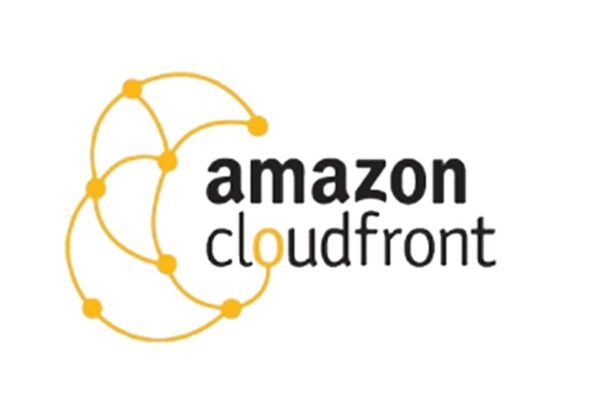
The content delivery network (CDN) service provided by Amazon is called Amazon CloudFront, and it is strong and popular. Under the term Amazon Web Services, Amazon shows its cloud-based services (AWS). Other AWS services like S3, elastic load balancing, and amazon route 53 are simple to integrate with this application. In addition to using other AWS services, this enables customers to disseminate their content globally quickly.
When a user asks for content from CloudFront, CloudFront routes the appeal to the edge location nearest to the user, where the cached material is then delivered. By doing this, the amount of distance that data needs to travel is decreased and the speed at which the user receives the material is increased.
Its distinct combination of features, along with its vast network of edge locations across the world and interaction with other AWS services, make it a fantastic option for anyone wishing to quickly and securely deliver content to a worldwide audience.
Amazon Cloudfront features include:
• Offers support for various content formats, including static and dynamic content, live events, and streaming media.
• The ability to deliver content in a secure manner utilising the HTTPS and WebSocket protocols, which helps to safeguard data integrity and privacy.
• AWS management console to control the provided services using a user-friendly web interface.
• It employs the AWS shield, AWS web application firewall (WAF), and Amazon route 53 to guard against attacks on the data.
It delivers capabilities like Lambda@Edge, which greatly accelerates calculation speed and boosts performance, and restricts access to only authenticated viewers via token authentication.
Microsoft Azure CDN
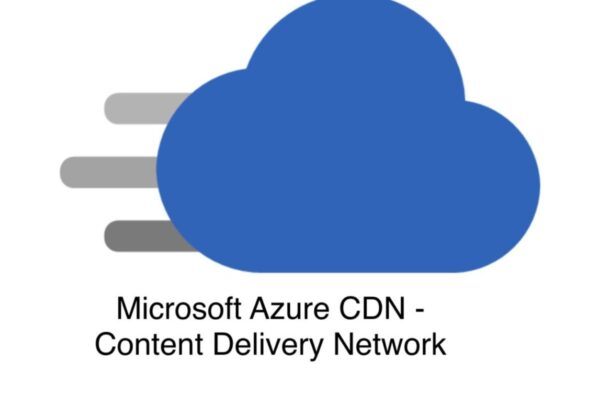
Microsoft Azure CDN is a strong and flexible content delivery network that enables users to send their content to people all over the world fast and effectively. For businesses looking to optimise content delivery and boost the effectiveness of their online presence, it’s the perfect option because of its vast range of features, interaction with other Azure services, and affordability.
It allows users to cache copies of that content on servers across several geographies, allowing users to provide content, like web pages, photos, videos, and other files, to users more quickly. By enabling users to access the content from the server closest to them, the delivery time of the content is decreased.
For companies and organisations that need to provide substantial amounts of data and media to people worldwide and that desire the flexibility and integration that Azure services can deliver, Azure CDN is the perfect answer.
Tools of Microsoft Azure CDN include support for several protocols, including HTTP/HTTPS, WebSockets, HTTP/2, and QUIC, as well as parts for caching rules, security settings, and analytics for tracking how well its content is doing.
• Support for custom domains and origins, allowing users to serve content using their field names.
• It offers a seamless connection with other Azure services, making managing various services simple.
• Data security measures include HTTPS, WAF, and DDoS protection.
• token-based authentication to fend off illegal access.
• Security using SSL and TLS to guarantee proper data delivery across the internet.
Stackpath
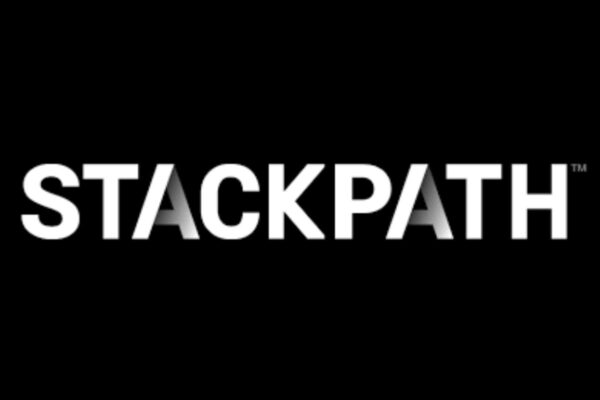
StackPath CDN is a content delivery network (CDN) solution that aids in the rapid and effective distribution of content to users all over the world. It provides a vast array of cutting-edge security capabilities, including a Web Application Firewall, DDoS defence, and SSL/TLS encryption. Because of this, it is a good fit for companies that need to protect sensitive data or are more vulnerable to cyberattacks.
The “Custom Rules Engine” of the StackPath CDN is one of its distinguishing features. It enables sophisticated customization of caching and delivery rules, including the creation of custom caching headers, the establishment of custom origin pull rules, and even the creation of “edge workflows” that enable the execution of complex logic at the network’s edge.
It shows a simple user interface, real-time analytics, and several sophisticated features. This makes it simple for website owners to check on the performance of their site and make changes as necessary. It is a comprehensive option for website owners searching for a reliable and safe means to distribute their material to a worldwide audience.
The following are some features of StackPath:
• StackPath includes a strong API that enables automation and integrations with a variety of applications and services.
• Users may easily improve the performance and security of their website by adding custom rules to the CDN configuration.
• Provide DNS services so that website owners can control their DNS records and speed up website loading.
• Real-time analytics to track the website’s performance and change the settings as needed.
• Edge computing services to do sophisticated calculations at the network’s edge rather than in a centralised location.
• A custom rules engine that automates the actions involved in content distribution.
KeyCDN
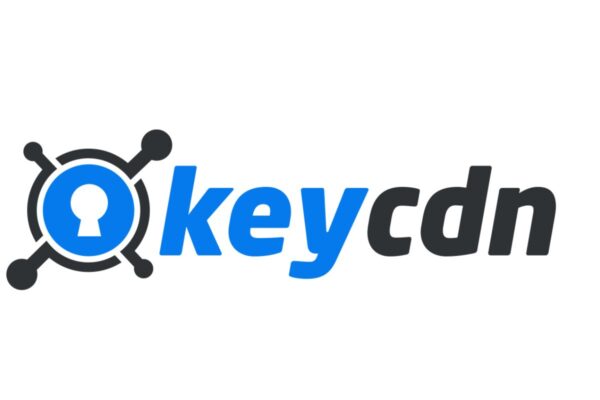
KeyCDN is a strong content delivery network (CDN) that assists companies in accelerating the distribution of their online content to customers all over the world. Customers can quickly set up and manage their CDN service with the help of the user interface, which is straightforward and intuitive and doesn’t require any technical knowledge.
Real-time analytics, unique SSL certificates, and a potent API are just a few of the other capabilities that KeyCDN provides. As a result, companies can better manage how their content is delivered and tailor their CDN to meet their unique requirements.
Features of KeyCDN include:
• Integration with all popular content management systems, such as WordPress, Joomla, Magento, Drupal, Prestashop, and Laravel.
• Powerful image processing to improve the image and speed up loading.
• A credit card is not necessary for the 14-day free trial.
By only taking requests from parties with fair tokens, secure token authentication adds an extra layer of protection. By preventing bad bots and crawlers from accessing your resources, the bad bot blocking functionality will help you lower the load on your server. You can utilise account access rules to limit access to your resources based on an IP address or network.
CDN77
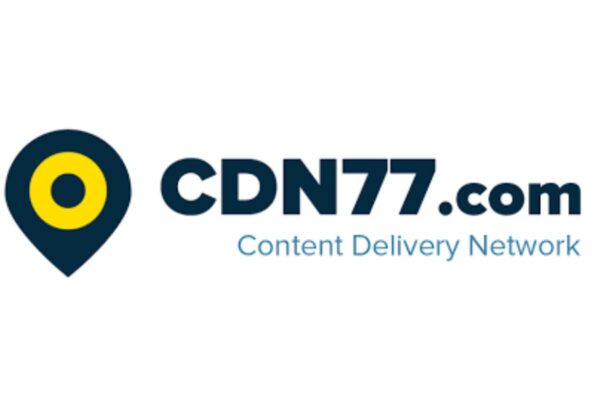
The way that web knowledge is distributed to people all around the world is changing because of CDN77, a top-performing Content Delivery Network (CDN). Unlike conventional CDNs, CDN77 is constructed with the most recent technologies, utilising state-of-the-art gear and software to guarantee super-fast delivery of your content.
CDN77 can provide content to consumers in even the most remote regions because of its more than 80 points of presence (PoPs) spread across important data centres across the world. This makes sure that wherever your users are, your website or application is always accessible and responsive.
There are various ways that CDN77 sets itself apart from other CDN suppliers. They place a lot of emphasis on offering a simple, user-friendly interface for controlling the distribution of content, which is one of their primary differentiators.
The CDN77 platform comes with several tools and features that make it simple for users to set up and administer their CDN service, including a user-friendly control panel, real-time analytics, and connection with well-liked content management systems like WordPress.
Features of CDN77:
• The service is compatible with several protocols, including HTTP/2, QUIC, WebSocket, and others.
• CDN77’s customizable caching rules let you build your own special caching rules to regulate how the material is delivered to consumers.
• Detailed analytics and statistics on how well your website or application is doing can be utilised to improve delivery and spot potential problems.
• Using the capability of IP & Geo whitelisting/blacklisting, it is simple to ban traffic from any certain IP address or nation.
• The top 10 vulnerabilities are addressed by the OWASP Core Rule Set (CRS), which aids with data protection.
• A secure token can be used to create a secured link with expiry for any given IP address.
• Purge to remove the cached content from the edge server and Prefetch to upload the content to the edge server.
Akamai

A business called Akamai Technologies offers the Akamai Intelligent Platform content delivery network (CDN) solution. With over 365,000 servers in more than 135 nations, Akamai’s CDN is among the biggest and most popular in the world. It is frequently utilised by big businesses to provide their clients with content and services, including banks, media outlets, and e-commerce websites.
The company has been active in this industry for twenty years and has a reasonable level of experience. Akamai is a frontrunner in bot management, according to Forrester. It receives numerous honours in this industry for its dedication to offering a trustworthy service.
One-half of the Fortune 500, significant banks, news outlets, governmental entities, and other well-known brands are among Akamai’s clientele. By 2021, Akamai was managing up to 30% of all internet traffic at peak times.
Features of Akamai include:
• Akamai’s CDN can be adapted to meet the particular requirements of various kinds of websites and enterprises.
• It has features including distributed denial of service (DDoS) defence, web application firewall, and sophisticated threat protection to help protect websites from attacks.
• An automation tool that enables users to control and manage their CDN services programmatically through APIs, giving them additional freedom.
As well as cloud-based solutions like Cloud Connect and Cloud Security Solutions, Akamai’s CDN has features that optimise the delivery of content to mobile devices, such as adaptive streaming and mobile-specific content delivery. These tools enable businesses to gain insights into the performance of their websites and the behaviour of their users.
CacheFly

Delivering high-bandwidth material, such as video and software downloads is the focus of the content delivery network CacheFly. It offers content delivery at up to 10 Gbps with less than 60 ms of latency across a global network of more than 50 points of presence (PoPs) spread across more than 30 nations.
You may control how your information is served with CacheFly’s sophisticated Control function. It is simple to distribute traffic among various servers and keep a healthy balance. As a result, the latency will be greatly reduced and performance will be increased.
The unique selling point of CacheFly is how it optimises content delivery using proprietary software and hardware. According to the company, it was the first TCP-anycast-based CDN in the world.
It makes use of Anycast routing to make sure that content is transmitted from the server that is located closest to the end user, hence lowering latency and enhancing the quality of the transmission of the content.
CacheFly has the following features:
• It offers a fully managed CDN so that you don’t have to worry about managing your CDN and can focus on your business;
• Mobile content optimization option to optimise the material for better deliverability on mobile phones.
The VOD cache layer ensures that content is delivered quickly from the closest edge server. The storage optimization system ensures that no cache misses occur, preventing any of your users from being redirected to your origin server.
CDN Bunny
Users looking for a quick, dependable, and reasonably priced CDN service may consider Bunny CDN. Bunny CDN is a fantastic option for companies of all sizes with its extensive network coverage worldwide, cutting-edge capabilities, and pay-as-you-go price structure. This CDN has more than 112 points of presence worldwide since it began operating in 2014. It has helped businesses like Hyundai, Optinmonster, and Appsumo speed up the delivery of their content and improve user experience overall.
Bunny CDN is a global network of servers that are carefully positioned in important data centres all over the world. As a result, the business may provide users in various geographical areas with quick and dependable content delivery services.
Features of BunnyCDN:
• Real-time monitoring of website performance for effective management and quick content delivery.
• Images can be delivered extremely quickly thanks to technologies like image optimization.
• Create your own edge rules that correspond to your expectations.
• Geo-blocking functionality, which prevents access from any particular area to protect safety.
• Useful analytics to keep you informed about performance-related metrics and bandwidth delivery statistics.
edited and proofread by nikita sharma



